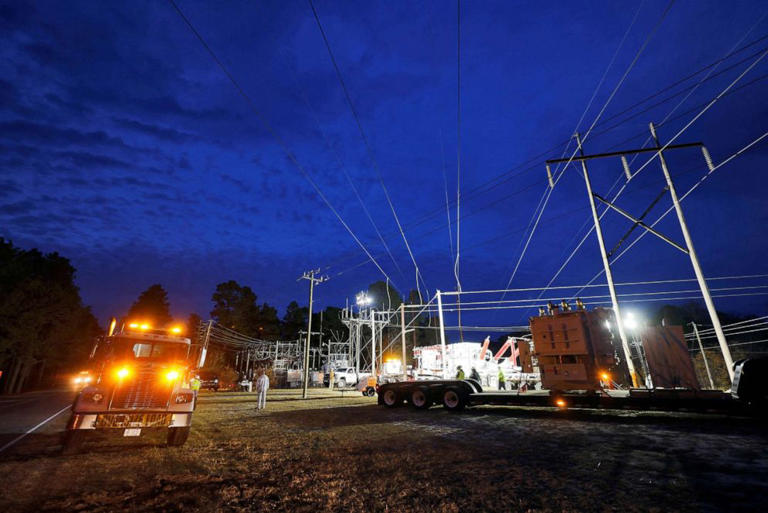
By Julia Harte and Alexandra Ulmer
(Reuters) – A North Carolina law that restricts the release of recordings from police cameras is complicating efforts by relatives of Andrew Brown Jr., a Black man killed by sheriff’s deputies last week, to view the footage capturing his shooting death.
The family’s struggle reflects a hurdle faced in many U.S. states, where a thicket of complex laws limits public access to body-camera footage that can prove crucial in prosecutions of officers involved in such shootings.
U.S. law enforcement agencies are under mounting pressure to use body-worn cameras following high-profile police killings, including the murder of George Floyd by Minneapolis officer Derek Chauvin. Prosecutors used Chauvin’s body-camera footage – as well as video shot by a bystander – to help convince a jury to convict the former officer on April 20.
But widely varying laws mean some videos are released within hours – as in the April 20 police shooting of Ohio teenager Ma’Khia Bryant – while some remain out of public view.
Lawyers for Brown’s family vented their frustration on Monday over the paltry footage shown to them since sheriff’s deputies in Pasquotank County, North Carolina, killed Brown in his driveway on April 21 as they sought to arrest him on a drug warrant.
Family members and one of their lawyers were allowed to see 20 seconds from one body camera but have sought disclosure of footage from nine body cameras, dash cams and street cameras they said captured the killing.
“We want all of it. Because that’s what transparency is. Let us see it with our own eyes,” said lawyer Ben Crump, who also represented Floyd’s family.
The attorneys said the 20-second video showed sheriff’s deputies shooting at Brown while his hands were on the steering wheel of his car in his driveway, and then continuing to shoot as Brown attempted to drive away from them.
Pasquotank County Attorney R. Michael Cox said in a statement on Monday that authorities were blurring “some faces” in the video before showing it to Brown’s family, citing the need to protect an active investigation.
Neither Cox nor the Pasquotank County Sheriff’s Office responded to requests for comment about why only 20 seconds of footage was shown to Brown’s family, or their allegations that Brown was “executed.”
A 2016 North Carolina law lets law enforcement agencies decide whether to allow relatives of people in body-camera videos to view the footage, and how much they may see. The same law requires anyone seeking a copy of the recording to get approval from a superior court judge.
North Carolina’s rules are among “the most restrictive” in the country, according to Daniel Lawrence, a researcher at the Urban Institute who studies policing practices nationwide.
Privacy concerns and a desire to avoid influencing potential jurors in officer trials are typically why footage is kept private, he said.
But in most cases, Lawrence said, “it’s most beneficial to release an unedited, unredacted version for public consumption.”
Ann Webb, senior policy counsel at the ACLU of North Carolina, said the state’s law gives too much discretion to authorities and creates unnecessary delays by requiring a court order.
POLICE DISCRETION
About 47% of general-purpose law enforcement agencies had bought body-worn cameras in 2016, according to a 2018 report by the Bureau of Justice Statistics.
At least 12 states did not have rules specifically regulating the public’s access to footage from body-worn cameras as of October 2018, according to the Urban Institute. North Carolina had been one of them until Republican Governor Pat McCrory, flanked by law enforcement officers, signed the 2016 law.
Before then, each of the state’s more than 600 law enforcement agencies decided how to handle police camera footage, with some declaring it confidential and others releasing it more freely.
Now, when relatives of people in those videos ask to see them, North Carolina requires law enforcement agencies to disclose only portions that they deem are “relevant to the person’s request.” Similarly, when a court receives a petition to release footage, the law lets the court place “any conditions or restrictions” on the material.
Attorney Mike Tadych said it is difficult to request precise portions of recordings of officer-involved shootings where few details are known because “you’re being asked to describe something that you’ve never seen.”
His law firm, Stevens Martin Vaughn & Tadych, PLLC, petitioned the Pasquotank County Superior Court on behalf of at least 16 news organizations on Monday morning to release a copy of the recordings of Brown’s death. Late Monday afternoon, the sheriff’s office also petitioned the court to release a copy.
A court hearing is scheduled for Wednesday on whether the body cam footage can be disclosed to media organizations.
(Reporting by Julia Harte and Alexandra Ulmer; Editing by Colleen Jenkins and Dan Grebler)












